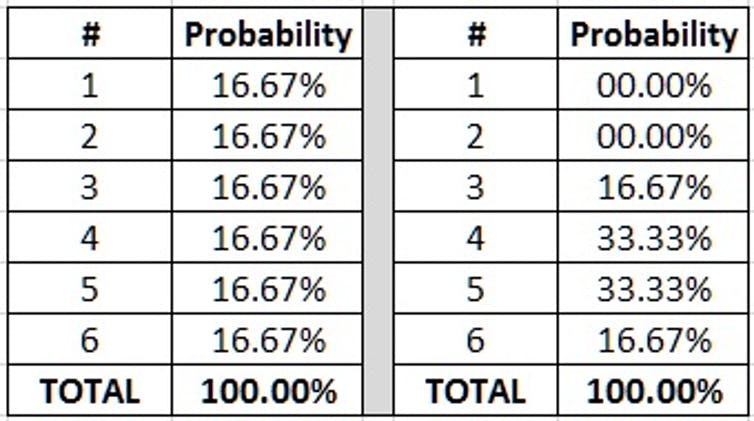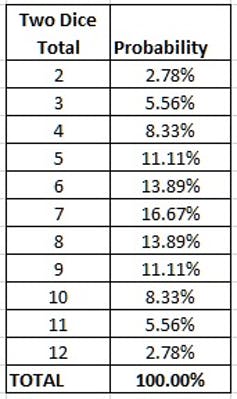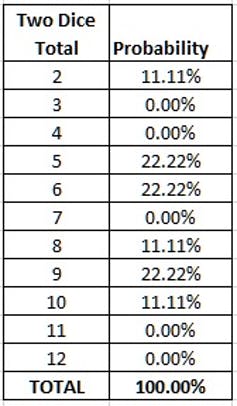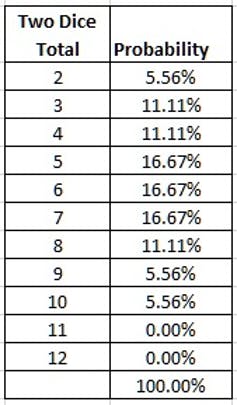How to cheat when playing dice - tips game expert
- Transfer

Recently, archaeologists unearthed a game block of 600 years of age, which was probably used for scamming. On the edges of the wooden cube from medieval Norway there were two fives, two fours, a trio and a six - and there were no one and two. It is believed that this cube was used to cheat when playing dice, and not in any particular game in which certain combinations of numbers were needed.
Today, these cubes are known as "tops and bottoms". They are useful for dishonest play, if you are prone to such actions, although they do not guarantee a permanent win, and they do not withstand a thorough inspection by suspicious opponents (they just have to ask to see the cube - and they will reveal you). But when playing dice, there are several other scam options, some of which I will tell you about.
It should be noted that these methods are forbidden to use in casinos, and I do not recommend you to use them in such establishments - this is just an interesting method for studying probabilities.

Probabilities for a fair dice and for a cube "top and bottom".
In fair dice, the probability of dropping any number of six is the same, and is 16.67%. In the case of the Norwegian dice, the numbers 4 and 5 appear twice as often as they occur two times, so for them the probability is 1/3, 33.33%. The table lists these probabilities.

Probabilities for the sum of two bones
It is not necessary to have a particularly vivid imagination to understand how you can use the altered bones to your advantage. Suppose we play with two normal dice. They can fall 36 different ways, and give 11 possible options for the sum of numbers. For example, any of the 6 + 4, 4 + 6 and 5 + 5 combinations will total 10.
If we use two modified cubes, on the edges of which there are only numbers one, four and five, we will not be able to throw out 11 or 12, since there are no sixes on them. Similarly, we cannot throw three, since we do not have a combination of 1 + 2. Also, we will not be able to get a combination, the sum of which will be equal to seven - and the probability of such a combination is usually the greatest, 16.67%. In craps, a dice game that is played in a casino, there is often a situation in which you don’t need a seven at all. Therefore, if you play with dice, on which it is impossible to throw a seven, you will have an advantage.

How not to throw a seven with two modified cubes
Since such altered bones will not pass even a superficial close inspection, they must be entered into the game for a short period, and then replaced again. To do this, the scammer needs to be an expert in the field of manual dexterity, palminga, able to hide one set of bones in his hand, and then bring them into the game, removing another pair from it.

The probabilities of dropping the sum of two cubes, when one of which has only one, two and four numbers.
Using two dice with the same repeated numbers is quite risky, so a scammer may prefer to replace only one dice of the two. In our example, this means that it will not be possible to avoid the seven, and the probability of its loss will remain equal to 16.67%. But at the same time, the amounts of five and six will have the same probability.
The probabilities in the game of craps are arranged so that when you need to avoid the seven, the probability of the appearance of this amount is the highest. By replacing one die, you can reduce the chances of casinos to win, increasing the likelihood of the appearance of other combinations.
Cube with a modified center of gravity ("loaded")
When playing with loaded bone, cheating is harder to identify. They can be done in different ways. For example, you can drill one of the points on one of the faces, and fill it with heavy material so that the cube is more likely to land this face down. If you drill out number one, then the probability of the appearance of the six will be greater, since the six is always located opposite the unit. Another way to load a cube is to slightly change its shape to increase the likelihood of rolling. This may give a slight advantage, which will give a scammer a head start.
With the use of bones "top and bottom" it is easy to calculate the probabilities of falling out of different amounts. With the loaded cube everything is not so simple. One way to estimate probabilities is to roll a die many times (perhaps thousands), and see which numbers fall and how often. If you see that the probability of dropping seven has become less than that of honest cubes, this can play into the hands of fraud.
Controlled throws
Another way of fraud does not require dishonest cubes and includes only the training of throwing techniques in a controlled way. You let the cube slip or fall so that it turns a certain edge upwards. When using two cubes, you can use one as a stopper for the other. An experienced player can make such throws so that it will be difficult to notice.
Dominic Lorigio , the “Dominator of the Cubes," knew how to roll the cubes in such a way that it looked normal, but they landed in the right combination. This is achieved by studying how the cube is flying in the air, and controlling each stage of the roll. It takes many hours of practice to bring it to perfection, but he achieved that he could constantly win when playing craps.
Many would agree that Lorigio played simply by using the rules to create advantage in his favor. This method resembles blackjack card counting. Casinos may not like this, but technically speaking, you are not cheating - although in some casinos you may be forced to roll the dice differently if they start to suspect that you are using controlled throws.
